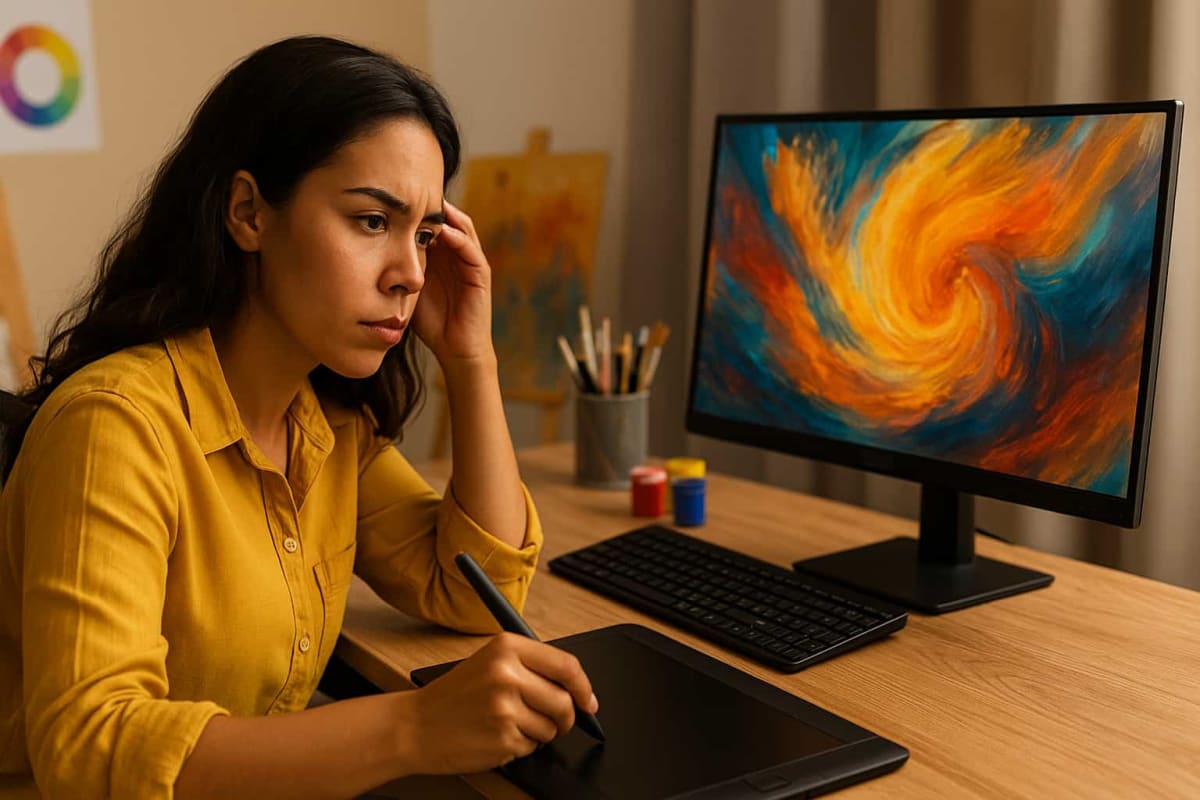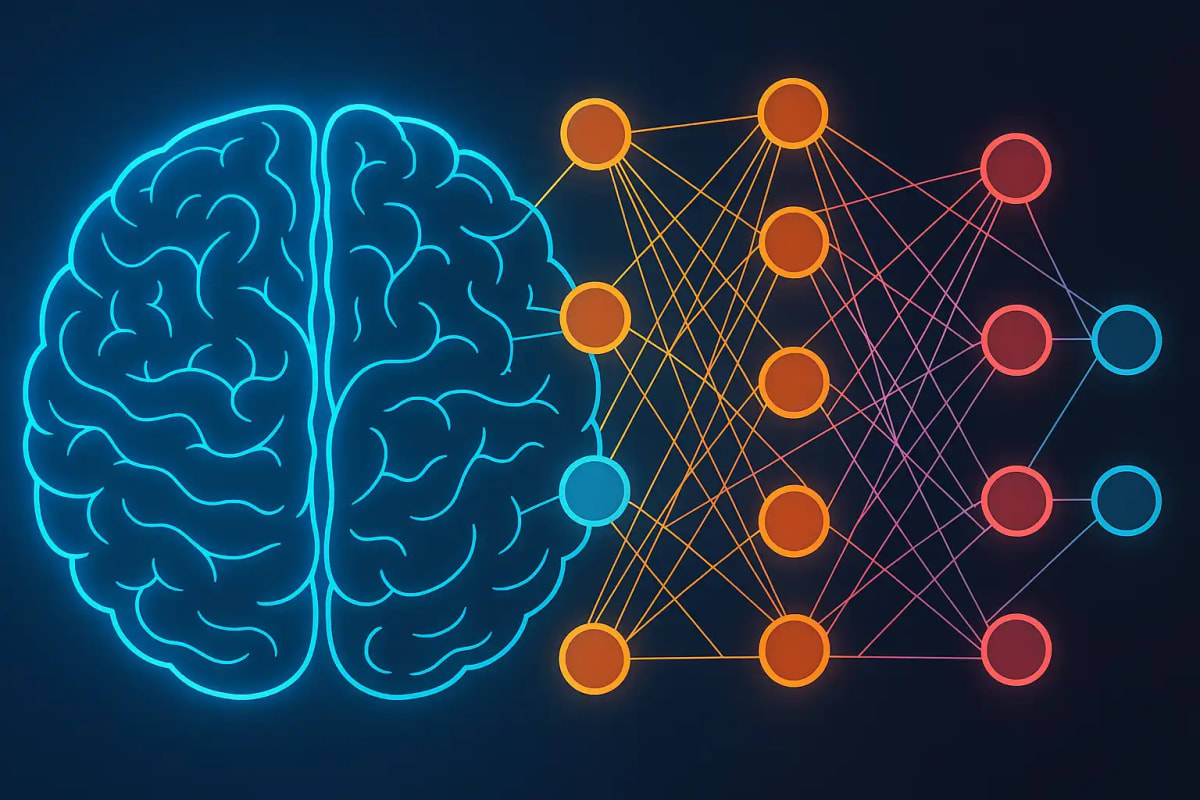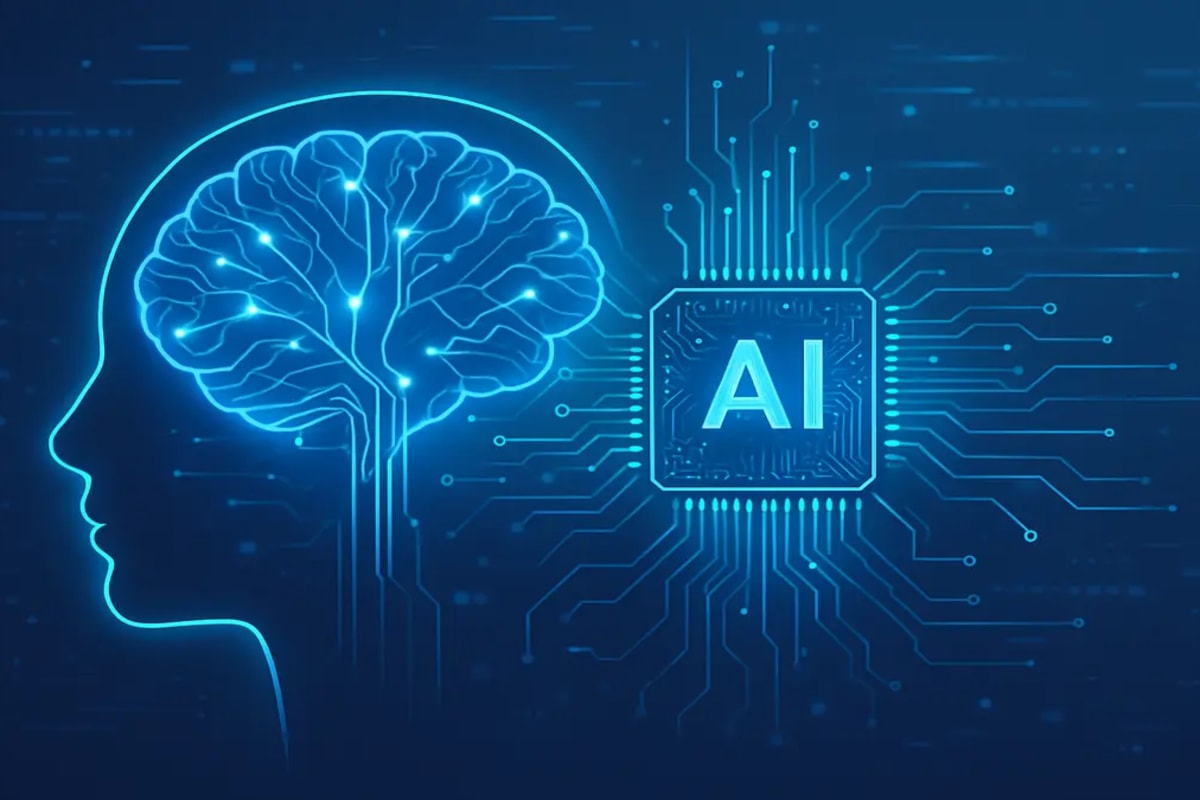
Discover how artists leverage AI for copyright: watermarking, monitoring, style poisoning, and NFTs. Protect your art in the AI era with these new strategies.
News and Niche
The rise of artificial intelligence has brought with it a wave of exciting new possibilities, particularly in the realm of art. AI can now generate stunning visuals, mimic artistic styles, and even collaborate with human creators in unexpected ways. However, this technological leap has also ignited a significant debate and a growing concern among artists: how can they protect their original work and unique styles in a world where AI can so easily learn from and replicate their creations? The fear of their art being used without permission to train these powerful AI models, or of AI-generated imitations flooding the market, is very real.
But just as AI presents a challenge, it also offers a potential solution. In a fascinating turn of events, artists are now starting to harness the very power of artificial intelligence to defend their creative output. This blog post will delve into the innovative and increasingly sophisticated ways artists are leveraging AI technologies themselves to safeguard their copyrights, authenticate their work, and ultimately thrive in this rapidly evolving digital landscape. Welcome to a new era of artistic protection, powered by the very technology that once seemed a threat.
The Growing Threat: AI Art Generation and Copyright Concerns
To understand why artists are turning to AI for protection, we must first acknowledge the nature of the threat posed by AI art generation. The core of the issue lies in how these AI models learn and the implications this learning process has for traditional notions of copyright and artistic ownership.
AI Training on Existing Art: Ethical and Legal Grey Areas
At its heart, an AI art generator learns by being fed massive datasets of existing images. These datasets often include a vast amount of copyrighted material, from famous paintings to independent artists' online portfolios. The AI analyzes these images, identifying patterns, styles, and techniques. This learning process allows it to then generate new images that can mimic these observed characteristics.
The ethical and legal grey area arises when this training data includes copyrighted works without the explicit permission of the copyright holders. Artists are understandably concerned that their unique styles and creations are being used as raw material for AI models, effectively allowing others to profit from or replicate their artistic voice without any form of compensation or acknowledgment. The debate rages on about whether this constitutes copyright infringement, and legal frameworks are still struggling to catch up with the rapid advancements in AI technology. Many artists feel a sense of violation and fear that their distinctive visual language is being commodified and diluted.
The Problem of AI-Generated Imitation and Plagiarism
One of the most immediate concerns for artists is the ease with which AI can now mimic specific artistic styles. By simply prompting an AI with a description like "a painting in the style of [Artist's Name]," it can often produce images that bear a striking resemblance to that artist's work. While these AI-generated pieces may not be exact copies, they can be close enough to confuse consumers or even devalue the original artist's creations.
Proving copyright infringement in such cases is incredibly difficult. Copyright law typically protects specific expressions of an idea, not general styles. Determining whether an AI-generated image is a direct enough copy to constitute plagiarism under existing laws is a complex legal challenge. This leaves artists feeling vulnerable to the widespread imitation of their styles, potentially impacting their ability to secure commissions or sell their original pieces. The market could become flooded with cheaper, AI-generated "homages" that undermine the value of human-created art.
Traditional Copyright Limitations in the Age of AI
Traditional copyright law, while still important, faces significant limitations when it comes to addressing the unique challenges posed by AI. Enforcing copyright against the developers of large AI models, who may have used vast and varied datasets, is a monumental task. Tracking down every instance where an AI might have been trained on a specific artist's work and proving direct infringement is often impractical.
Furthermore, the very nature of AI-generated art, where the final output is a result of complex algorithms and prompts rather than direct human creation, complicates the concept of authorship and ownership. Existing copyright frameworks, largely designed for human creators, struggle to define who owns the copyright to an AI-generated image – the prompter, the AI developer, or no one at all? These uncertainties highlight the urgent need for new approaches and potentially updated legal frameworks to protect artistic ownership in this new technological era. Artists recognize that relying solely on traditional copyright may no longer be sufficient.
The Counter-Attack: How Artists Are Harnessing AI for Protection
Faced with these challenges, artists are not standing still. They are increasingly recognizing the potential of AI itself as a powerful tool for defense. By embracing these innovative technologies, artists are taking proactive steps to protect their work in ways that were previously unimaginable.
AI-Powered Watermarking and Signature Verification
One promising area is the development of AI-powered watermarking and signature verification technologies. Traditional watermarks can often be easily removed or cropped, offering limited protection. However, AI allows for the embedding of invisible watermarks within the digital data of an image. These watermarks, generated and detected by sophisticated AI algorithms, are much harder to remove or tamper with without significantly degrading the image quality.
Similarly, AI can be used to analyze and verify the unique characteristics of an artist's signature or even subtle stylistic elements that are difficult for humans to consistently identify. An AI trained on an artist's body of work can learn these nuanced patterns and act as an authenticator, verifying the legitimacy of a piece and detecting potential forgeries or imitations. This offers a significant advantage over relying solely on human expertise, which can be subjective and time-consuming.
Using AI for Copyright Monitoring and Tracking
Another powerful application of AI for art protection lies in its ability to monitor and track the use of artwork across the vast expanse of the internet. AI-powered tools can scan websites, social media platforms, and online marketplaces to identify instances where an artist's work might be used without permission.
These tools can be trained to recognize specific images or even stylistic similarities to an artist's unique style. When a potential infringement is detected, the AI can automatically alert the artist or their representatives, providing valuable information about the unauthorized use, such as the location and extent of the infringement. This automated monitoring allows artists to stay informed about how their work is being used online and take quicker action to address any misuse, a task that would be virtually impossible for a human to perform manually on such a large scale.
AI for Style Poisoning and Data Disruption
A more controversial but potentially effective method artists are exploring involves "style poisoning" or data disruption. This technique involves introducing subtle but strategically designed alterations to their artwork that are imperceptible to the human eye but can confuse and disrupt AI models when they attempt to learn from the poisoned data.
The idea is that by feeding AI models slightly corrupted data, artists can make it more difficult for them to accurately replicate their style or generate coherent imitations. This acts as a form of "digital sabotage," making the artist's unique visual language less digestible and reproducible by AI. While the ethical implications of intentionally corrupting datasets are still being debated, this approach highlights the innovative and sometimes adversarial ways artists are thinking about protecting their creative identity in the age of AI.
AI-Driven Smart Contracts and NFTs for Enhanced Ownership
The rise of Non-Fungible Tokens (NFTs) has already provided artists with a new way to assert ownership and provenance over their digital creations. Now, AI is being integrated into this space to further enhance security and manage ownership rights. AI can be used to automate the creation and management of NFTs, ensuring secure and transparent records of ownership and transaction history on the blockchain.
Furthermore, AI can be embedded within smart contracts associated with NFTs to automatically enforce usage rights and licensing terms. For example, a smart contract powered by AI could automatically track how an NFT is being used and trigger royalty payments to the artist if it's used commercially beyond the agreed-upon terms. AI can also be used to verify the authenticity of NFTs, detecting potential forgeries and ensuring buyers are acquiring genuine digital artwork.
AI for Creating Unique Styles Less Susceptible to Replication
Beyond defensive measures, some artists are exploring how AI can help them develop entirely new and highly unique artistic styles that are inherently more difficult for other AI models to replicate. By collaborating with AI tools, artists can push the boundaries of their creative expression, generating novel visual languages that are less likely to be easily mimicked by standard AI art generators trained on traditional datasets.
This idea of "AI-assisted originality" suggests a future where artists leverage AI not just for protection but also as a partner in the creative process, developing styles that are deeply intertwined with their unique vision and the capabilities of the AI tools they use. This proactive approach focuses on staying ahead of the curve, creating art that is so distinct and innovative that it naturally resists easy replication.
Real-World Examples: Artists and AI in Copyright Protection
The concepts discussed above are not just theoretical. Artists and technology companies are actively developing and implementing AI-powered tools for copyright protection.
Case Studies of Artists Using AI Watermarking Technologies
Several platforms and technologies are emerging that offer AI-powered watermarking solutions for artists. For example, some companies are developing invisible watermarking techniques that embed cryptographic information within the image data, verifiable only by their AI algorithms. Artists using these technologies can embed proof of ownership directly into their digital artwork, making it much harder for unauthorized users to claim or profit from their creations without detection. While specific case studies might be proprietary, the increasing adoption of such tools signals their growing importance in the art world.
Instances of AI Helping to Detect Copyright Infringement
There are growing anecdotal accounts and emerging services that highlight the effectiveness of AI in detecting copyright infringement. AI-powered image recognition tools are being used to scan the internet for copies or near-copies of an artist's work, alerting them to potential unauthorized use on websites selling prints, merchandise, or even used in other digital creations without permission. These early successes demonstrate the potential of AI to act as a tireless digital watchdog, helping artists protect their intellectual property in the vast online landscape.
The Use of NFTs and AI Verification in the Art Market
The integration of AI into the NFT space is also gaining momentum. Platforms are exploring the use of AI to analyze the metadata and visual characteristics of NFTs to verify their authenticity and detect potential forgeries. This is crucial for building trust and value in the digital art market, ensuring that collectors are investing in genuine and unique creations. AI-powered provenance tracking within NFTs can also provide a clear and immutable history of ownership, further safeguarding the rights of artists and collectors alike.
Challenges and the Future Landscape of AI and Art Protection
While AI offers promising solutions for art protection, there are still significant challenges to overcome, and the landscape is constantly evolving.
The Ongoing Arms Race Between AI Art Generators and Protectors
The development of AI art generation and AI-powered protection is often described as an ongoing arms race. As AI models become more sophisticated at mimicking styles and generating high-quality imitations, so too must the AI tools designed to protect artists' work evolve to stay ahead. This requires continuous innovation and adaptation on both sides. There's no guarantee that current protection methods will remain effective indefinitely as AI technology advances.
Legal and Ethical Considerations of AI in Copyright Enforcement
The use of AI in copyright enforcement raises complex legal and ethical questions. Navigating the intricacies of international copyright law with AI-driven tools will require careful consideration and potentially new legal precedents. Ethical concerns surrounding techniques like "style poisoning" also need to be addressed to ensure fairness and transparency in the use of these protective measures. Striking a balance between protecting artists' rights and fostering innovation in AI art generation is a delicate but crucial task.
The Role of Collaboration Between Artists, Lawyers, and AI Developers
Ultimately, the most effective solutions for protecting artists in the age of AI will likely arise from close collaboration between artists, legal experts, and AI developers. Artists need to articulate their concerns and needs, lawyers need to help shape legal frameworks that address the unique challenges of AI, and AI developers need to create tools that are both effective and ethically sound. This interdisciplinary approach will be essential for building a future where artists can continue to create and thrive while their work is adequately protected.
Conclusion
The advent of AI art generation has undoubtedly presented a significant challenge to the traditional understanding and enforcement of artistic copyright. The ease with which AI can learn from and mimic artistic styles has created anxieties among creators about the potential for unauthorized use and devaluation of their work. However, as we have explored, the very technology that poses this threat also offers a powerful arsenal of tools for defense.
From AI-powered watermarking and copyright monitoring to innovative techniques like style poisoning and the enhanced security of AI-driven NFTs, artists are increasingly harnessing the capabilities of artificial intelligence to protect their creative output in the digital age. While challenges and ethical considerations remain, the ingenuity and proactive spirit of the artistic community, combined with the rapid advancements in AI, are paving the way for a new era of copyright protection.
It is crucial for artists to stay informed about these emerging AI-powered tools and to actively explore how they can be integrated into their workflows to safeguard their intellectual property. Furthermore, advocating for stronger legal frameworks that address the specific challenges of AI and art is essential. By embracing innovation and working collaboratively, artists can navigate this evolving landscape and ensure that their unique voices and creations are valued and protected in the age of artificial intelligence. The future of art and copyright in the digital realm depends on it.
Related Articles

Top AI Image Generators Compared: Leonardo, Midjourney, GPT-4o (2025 Deep Dive)
Compare Leonardo AI, Midjourney, & GPT-4o for AI art. Find the best tool based on features, pricing, & artistic style for your creative needs.

What Is a Neural Network? A Beginner’s Guide for the AI Era
Learn how neural networks work in plain English. A beginner-friendly AI guide with examples, types, and real-world uses. No tech skills needed.

What Is an LLM? A Beginner’s Guide to Large Language Models
Discover what Large Language Models (LLMs) are, how they work, and why they’re reshaping AI and everyday tech — explained simply for beginners.